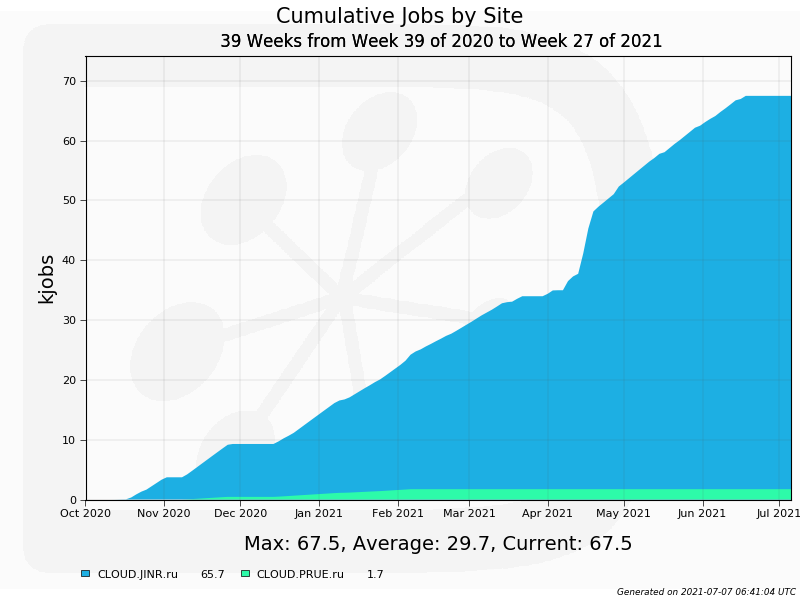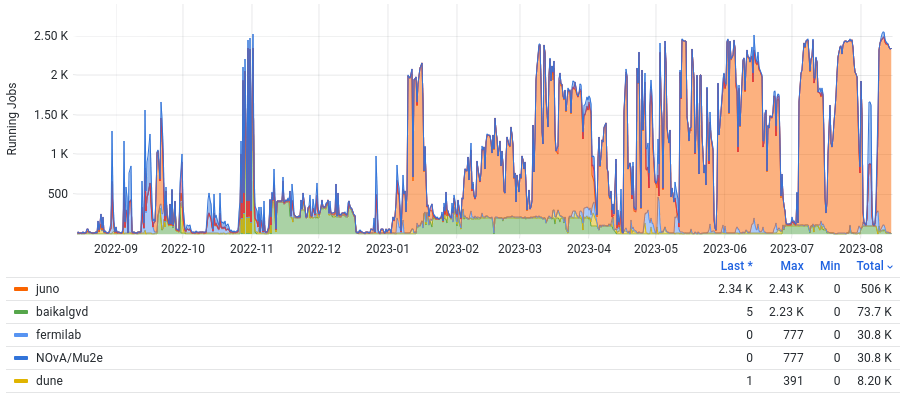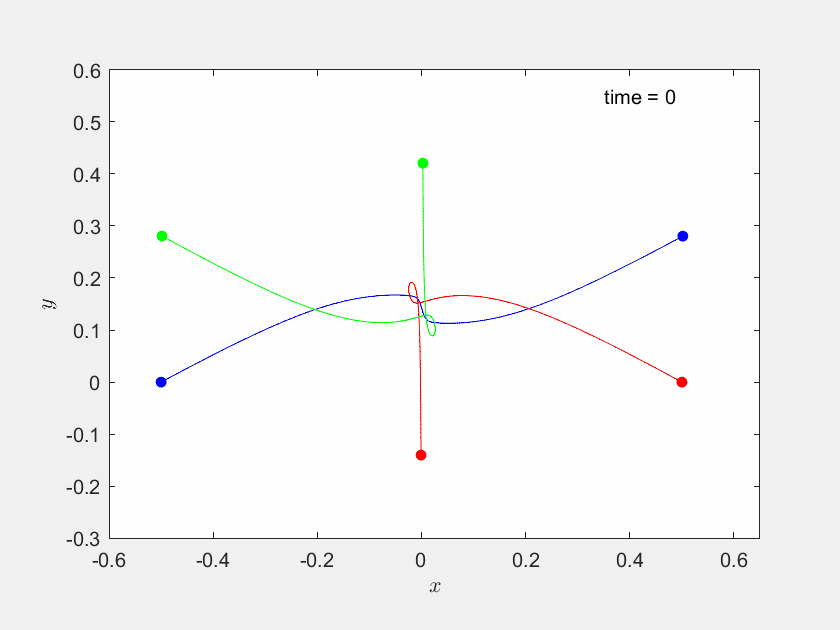Using of the DICE
Research on the SARS-CoV-2
Idle resources of the JINR DICE cloud segment are used to study the SARS-CoV-2 virus with the help of the Folding@home (F@h) project. It is a distributed computing project aimed to help scientists develop new therapeutics for various diseases by simulating protein dynamics. This includes protein folding and protein movements, and is reliant on simulations run on volunteers’ personal computers.
In March 2020, F@h launched a program to assist researchers around the world who are working on finding a cure and learning more about the coronavirus pandemic. The initial wave of projects simulate potentially druggable protein targets from the SARS-CoV-2 virus, and the related SARS-CoV virus, about which there is significantly more data available.
DIRAC running at JINR was tuned to perform Folding@home jobs within a week after the initial idea. No additional effort was required from the administrators of the already integrated clouds. Since small chunks of idle resources can be utilized by such payload, F@h jobs allow to enhance the overall efficiency of the shared resources.
F@h discover new antiviral candidates in animal testing and publish four papers so far:
1) SARS-CoV-2 Simulations Go Exascale to Capture Spike Opening and Reveal Cryptic Pockets Across the Proteome;
2) SARS-CoV-2 Nsp16 activation mechanism and a cryptic pocket with pan-coronavirus antiviral potential;
3) The SARS-CoV-2 nucleocapsid protein is dynamic, disordered, and phase separates with RNA;

https://stats.foldingathome.org/team/265602
Communication with the experiments
The JINR DICE cloud segment resources are used to solve a wide range of tasks representing a scientific experiment and/or collaboration:
- Neutrino Projects(DLNP): Baikal-GVD, JUNO, NOvA, TAIGA;
- NICA Projects: BM@N, MPD.
The major consumer of the JINR DICE resources is the Baikal-GVD scientific experiment. The number of its cumulative jobs completed from November 2020 to July 2021 amounts to 67.5 thousands.

Plot with the number of cumulative Baikal-GVD jobs completed from November 2020 to July 2021
All these jobs are Monte-Carlo simulation. The main issue with them lies in the 2.4 GB input file size, which needs to be downloaded for each job. It limits the number of resources that can be used for them, since some participating organizations have very limited network bandwidth. One of the possible solutions is to put this input file into the CVMFS repository. In this case, each job (except the first) will download it with a speed of the local network from the CVMFS caching node.
Information on the total amount of capacities acquired by neutrino experiments (data as of July 2025):

The number of running jobs during the period of 2022-08-14 to 2023-08-14:

The SPD modeling and reconstruction tasks were successfully tested, as well as the Monte Carlo simulation jobs for BM@N.
The total capacity of NICA project experiments as of July 2025:
- BM@N — 16 virtual machines, 96 cores;
- SPD — 46 virtual machines, 180 cores.
Classical Three-body Gravitational Problem
The C-code developed by Ivan Hristov and Radoslava Hristova (Sofia University) has been successfully adapted to run on on DICE resources
The initial conditions region sections for the classical three-body gravitational problem (mostly two-dimensional) were studied.
Two types of problems were solved:
- Computation of the decay times of the three-body system in the considered section;
- Searching for periodic orbits with Newton’s method in the considered section.
Since the problems are large and require solving many independent subproblems, the JINR DICE was used as a computing resource. An important feature of the work is the use of the GMP library (The GNU multiple precision arithmetic library), known for its high efficiency.

This problem is ideal for a distributed environment: minimal data transfer requirements!
Advantages of Monte-Carlo simulation on DICE
- Wide-spread in physics;
- Optimal for limited-bandwidth resources: small input data, computation-intensive workloads.